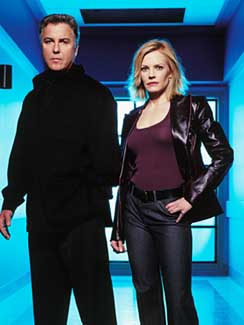With shovels slung over their shoulders, trowels and sifters in their hands, six archaeologists this week prepared to dig into the county's past. But so far, none of two dozen or so test holes - 185 are planned - around Boykin's Tavern has turned up what local history buffs hoped to find: the remnants of an icehouse, a kitchen and an herb garden.
"Nope," said Andrew Butts with a sigh, the project archaeologist, slapping his mud-stained knees to shake off wet dirt. "Not yet, but maybe tomorrow."
"It's just a very interesting place to dig, that's all" they'll say. "Boy, we sure do have a lot of test pits to dig. Might take us weeks. Good thing there's a tavern right here on-site for, ummmm, you know, water breaks and stuff. That's it, water. And food, too."
Hill dig yields treasure from 5000 years ago
ROCK art dating back 5000 years and an ancient jewellery workshop are among the treasures discovered in a Lothians excavation site ravaged by fire last year.
Details of the finds, from Traprain Law in East Lothian, were due to be unveiled at a conference in the Capital today.
Fraser Hunter, a National Museums of Scotland archaeology expert, is set to reveal the fruits of an intensive search of the area at the Edinburgh and East Lothian Archaeological Conference.
Team to reassess dig
The second day of the search for Amelia Earhart's remains on Tinian proved unsuccessful, and the Tinian Earhart Expedition team is considering reassessing the information they have and possibly postponing further digging until a potential phase two of the expedition.
However, the discovery of what the archaeologists believe is a nearby road built in the Japanese occupation era may be a clue to where to search at a future date.
As of yesterday afternoon, the team was still planning to excavate two sites that not only may be prehistoric ovens, but burial sites, as well.
The archaeological work had uncovered a great number of artifacts, such as chunks of stone tools, the sole of a shoe, a bit of cloth to crinkled beer cans. But thus far, no human bones.
We hadn't bothered posting anything on this Earhart fiasco before since we don't particularly regard it as archaeology, per se. This story had some possibly real archaeology in it though, so we figured we'd pass it along.
CSI: Cairo

Egypt Hopes to Solve Riddle of Tutankhamun Death
Egypt plans to X-ray the mummy of Tutankhamun to find out what killed the king who ruled Egypt more than 3,000 years ago and died while only a teenager.
Archaeologists will move Tutankhamun's body from its tomb, which was discovered packed with treasure in 1922, to Cairo for tests which should resolve the mystery over whether he died naturally or was murdered.
"We will know about any diseases he had, any kind of injuries and his real age," Egyptian antiquities chief Zahi Hawass told Reuters. "We will know the answer to whether he died normally or was he killed."
The mummy would be moved by the end of November and the CAT scan, which will produce a three-dimensional X-ray of his remains, completed by the end of the year, he said.
Hopefully a good set of CT scans will clear up some of the controversy about some aspects of the old x-rays.